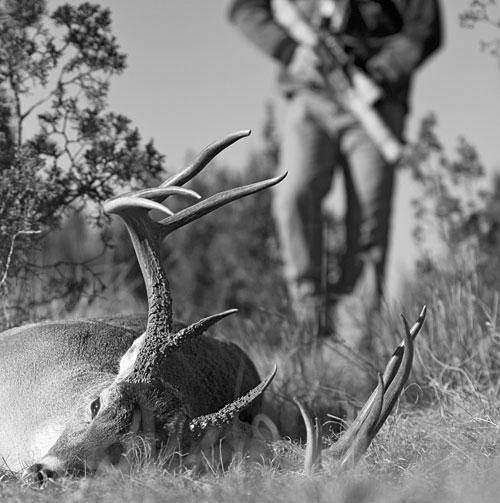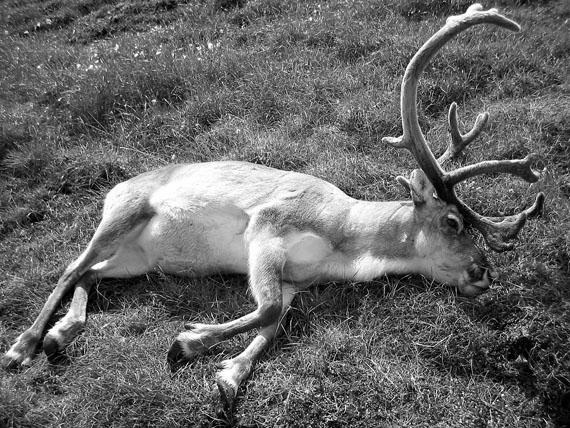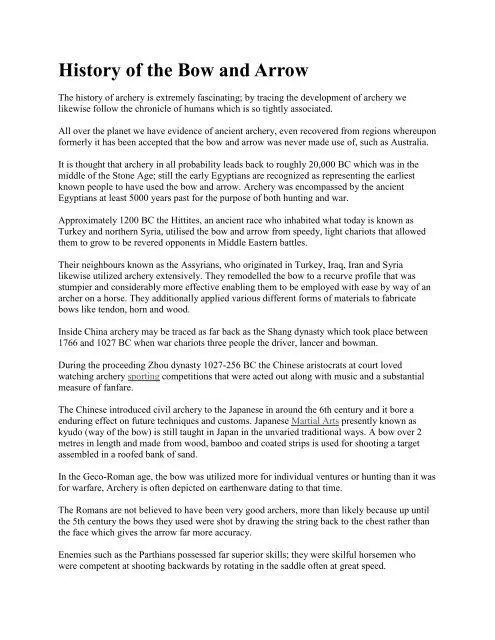Hunting has long been a practice associated with the outdoors. It’s essential in marginal climates where farming and pastoral activities would be impractical. In Arctic regions, hunters trap animals and use their hides for clothing and footwear. The Inuit also use sea mammals’ skins to construct their kayaks. And while it may be unsanitary for some to hunt a sea lion, it’s a vital part of their lifestyle.

Social relationships with hunters
Among the reasons for willing participation in hunting, social relationships with hunters were the most common. These motives included knowledge of hunting techniques, access to game meat, and responsibility for the land. Participants defined their interest in nature in three ways: as a recreational activity, as a form of meditation, and as a learning activity. In addition, many participants cited their relationship with the environment as a major motivator for participating in hunting.
While traditional rural socialization mechanisms are not as effective as they once were, partnerships could help connect landless hunters with landowners. This would involve small-scale recruitment initiatives to match landless hunters with landowners. But, there are several challenges, including individual landowners’ perceptions. A successful social recruitment program would also address the challenges associated with individual landowners’ perceptions of the hunting industry. But, if a landowner is willing to accept a hunter with limited land, there are many other ways to make the process easier and more effective.
Changing relationships with hunters was accompanied by a shift in power relations. Once the gentry began to hold hunting rights over large areas, hunting became a symbol of overlordship. As a result, hunting was also linked to poaching, and was a common means of defying the sovereignty of lords, kings, and clergy. Poaching has become intimately linked to ruling throughout modern political systems. However, despite these challenges, hunting remains a socially relevant marker of social status.
Hunting has accompanied humans since the evolution of the species. Hunting and gathering have enabled them to obtain sustenance, and even so-called ‘herders’ and ‘farmers’ have traditionally included hunted game and undomesticated plant foods in their diets, particularly when a drought threatens domesticated animals. These social practices have led to a diverse range of cultural traditions. These social practices are often associated with stigmatization and misperception.

The area in which the interviewees lived and the physical proximity to land were factors in determining whether they decided to hunt or not. First-time hunters tended to be those in rural areas while urban residents did not have such strong intentions. Instead, social relationships with hunters were the most influential factor in making the decision to hunt. A hunter could be a family member, a friend, or a neighbor. This is a strong indicator of the likelihood of successful hunting.
Moral justification for hunting
Many hunters say that killing wild animals is more ethical than buying meat from a factory farm. Others argue that hunting wild fish is better than aquaculture, since the animals were free to live and die a free life before being killed for their meat. Some even argue that hunting is less painful than the suffering animals endure in nature, like being hooked and thrown in the open sea. This argument has been satirized by the Onion.
Utilitarianism refers to the belief that right actions must be performed to increase the happiness of everyone involved. In other words, one should consider the interests of the animals and the interests of humans before acting. However, a utilitarian view of hunting may not be suitable for all situations. For example, the hunter may have no interest in killing a lion if his hunting isn’t necessary for his own well-being.
While the animal rights movement focuses on ethical considerations of animal life, deontologists focus on duty and rules that are appropriate to protect and benefit individual animals. In this view, killing a gazelle is justifiable if the lion needs to kill to survive. In contrast, a hunter’s kill is more wrong because it causes more harm to the gazelle than to the lion, who needs to eat to survive.

The Bible teaches us that animals and infants suffer as a result of our sin. Hundreds of millions of animals are killed every year as a result of humans’ inhumane actions, including hunting. Even the victims of these crimes are not responsible for their suffering, but we can at least recognize the pain and suffering caused by these actions. The Bible also makes clear that humans should not take the lives of other creatures simply for their own benefit.
Health benefits of hunting
One of the many benefits of hunting is increased cardiovascular fitness. Hunting requires a high level of concentration and body movement. This activity is similar to high-intensity interval training and improves cardiovascular health. Hunting is an excellent form of exercise for the heart, lungs, and lower limbs, and can improve your lung capacity. In addition, it’s good for your mental health. The physical activity of hunting is also stress-relieving.
Hunting increases energy levels, thanks to the rush of adrenaline. Adrenaline tells the liver to break down glycogen, which is stored in muscles. This boost of energy helps to maintain healthy blood pressure levels and protect against heart disease, diabetes, and obesity. Hunting also helps reduce stress because it requires cardiopulmonary exercise. Hunting also helps to boost the production of endorphins, which are hormones that elevate mood and promote overall well-being. Behavioral benefits of hunting include fat loss, muscle building, and a greater sense of self-confidence.
The meat of a hunted animal is generally much healthier than meat from a commercially raised animal. The meat of a wild animal is also higher in nutrients than meat from meat-rich commercially raised animals. Hunted animals eat a variety of natural foods, such as grass, which are rich in essential nutrients. The meat is also leaner because it contains less fat. Moreover, the meat is more tender and has less fat than meat from livestock.

Hunting is an art form, and there are many health benefits to it. While you may not immediately notice these benefits, the activity improves the overall quality of life. Hunting allows people to connect with nature and wash away any stress and tension. Hunting is not for everyone, and not all hunters are experienced. There are many benefits to hunting, so it’s important to find a hunting activity that you can enjoy. It’s the perfect opportunity to get closer to nature and enjoy an exercise that will make you stronger and healthier.
Another benefit of hunting is improved cardiovascular health. Currently, heart disease is the leading cause of death in the United States, and regular hunting seasons have been linked to improved cardiovascular health. An experiment published in the British Journal of Sports Medicine suggests that regular hunting seasons are associated with a reduced risk of death from cardiovascular disease. This also has implications for the development of diabetes. And in some regions, hunting is more beneficial than hunting. It improves mental and emotional well-being, which may be of greater concern to many people.
Disadvantages of hunting
The Disadvantages of Hunting Today
Overhunting causes extinction of species and ecosystem imbalances. Since the 1800s, overhunting has resulted in the death of 13 species. Overhunting has also lead to the introduction of exotic “game” animals, which can harm the environment and native wildlife. Additionally, hunting is a violent activity and often leads to accidents. Hunters kill animals for the sport and often become violent. This is not a sustainable way to live.

While there are many disadvantages associated with hunting, many people benefit from this practice. It provides protein-rich meals and helps protect the environment. Some people depend on this type of food for their daily rations. In addition, hunting allows people to learn about nature and animal behavior. Animals eat other animals for food, and hunting provides an inexpensive source of meat for many. Furthermore, many animals are used as clothing, blankets, and valuable tools. For some people, hunting is a good way to survive if they become lost in the wilderness.
The main Disadvantages of Hunting Today include the fact that some animals are not in great supply. Hunting is not meant to provide a prize for a parent, but rather to preserve a food supply for future generations. It is also a form of sport that sharpens the senses. The hunter is required to use all of his or her senses to catch the prey, which includes his or her intuition and hearing.
Compared to farming, hunting provides a healthier diet. Hunting also gives humans time to create music and art. Hunting also helps preserve ecosystem balance. While meat from animals that have been hunted is not always a healthy source of protein, the hunted animal is often higher in protein than meat produced by factory farms. This is especially true for people who are lost and rely on meat from hunted animals for their daily ration.
The hunting of endangered species has become controversial in recent years. While a small percentage of the trophy hunting revenue from trophy hunting goes to local communities, the vast majority is distributed among a few individuals. This practice often leads to distrust among locals and little economic improvement in impoverished communities. While the hunting of endangered species is often popular, it is a major cause of concern for the conservation of the species. So, what are the Disadvantages of Hunting Today?

There are a number of different species of deer, including elk, Mule deer, Pere David’s deer, and Chinese water deer. But what makes them so unique? We will cover some of the reasons, as well as some of the challenges, that these species face. In the end, we will learn why deer are not extinct. And while this may seem a bit daunting, it’s really not that difficult once you understand why.
Elk
We know elk aren’t extinct in part of North America. I grew up with stories of my father hunting elk in our country. I’ve always wondered how the Indians didn’t eliminate these great deer. Could disease have eliminated them, or did they simply replace the deer with other species? It’s possible both possibilities. Regardless of the situation, elk aren’t extinct because deer are.
Some biologists believe elk have not gone extinct. There are currently four subspecies of elk in North America, but two are extinct. Elk crossed the Bering land bridge more than a million years ago and spread to much of the continent. They then went through two periods of isolation, one in Wisconsin and one in southern Canada. As a result, many people now consider elk extinct.
In addition to conservation, elk are still farmed for meat in some states. Elk hunting is still primarily a sport activity, although some states are beginning to reintroduce elk as an alternative. Regardless of the reasons, elk aren’t extinct because deer aren’t, but we should take care of them.

Mule deer
The federal government can protect endangered species, including guppies, butterflies, and frogs, but the federal government has not done the same for mule deer. The decline in mule deer’s numbers coincided with a dramatic resurgence in elk. Wildlife biologists worry that a 10% drop in mule deer population by 2021 could be caused by the lack of water in the first half of the year.
The International Union for Conservation of Nature (IUCN) has classified mule deer as Least Concern, a classification that makes most of its subspecies not threatened. Although the SF subspecies is rare – only two individuals were captured in the wild – it is still the only one that is infected with CWD. The FF subspecies, which is considered vulnerable since feral dogs have been affecting it, is an exception. Other island subspecies are considered endangered.
The mule deer is easily identifiable by its large ears, which are three-fourths the length of its head. In addition to its ears, the deer’s overall appearance is easy to recognize. The male grows antlers during the summer, but sheds them during the winter. It has a white tail with a black tip. The deer is active during warm weather and at night. It also has excellent eyesight.
Pere David’s deer
The Pere David’s deer are native to eastern and northeastern China. They were nearly extinct in the wild, but were reintroduced to their natural habitat thanks to captive breeding by a British aristocrat. In 1865, a disastrous flood in China nearly wiped out the entire population of the Pere David’s deer. Now, the species survives in a 1,000 hectare reserve in China. Over 900 animals are found in the reserve, including the largest herd of black rhino in the UK, western lowland gorillas, bears, and giraffes.

While the Pere David’s deer are no longer extinct, their numbers are declining. The primary threat to their survival is the lack of genetic diversity, which has caused them to have low reproductive success, low life expectancy, and increased susceptibility to disease. Lack of grazing habitat is another problem that keeps the population numbers low and hinders the population’s stability. Luckily, a master plan to conserve the Pere David’s deer can help solve these problems. While international cooperation is needed to overcome environmental problems and restore the numbers of these animals, sharing germplasm databanks and genetic databases are vital to the preservation of the species.
Chinese water deer
The myth of the Chinese water deer is a myth, but the animals are far from extinct. These creatures live in various areas of Europe and Asia, and their remarkable survival strategies have enabled them to thrive in such a varied climate. Also called the vampire deer, they have a teddy bear-like face, two robust tusks, and a wide array of other characteristics that set them apart from other species.
In addition to being introduced to Europe, the Chinese water deer aren’t extinct. The majority of their population comes from escapees from captivity and deliberate releases into the wild. The species’ main range extends from Cambridgeshire to Woburn, though small colonies are reported throughout the UK. This enigmatic animal is endangered in China, but it isn’t extinct yet. Despite its plight, the population of these animals in Europe and Asia is still growing.
In China, the water deer enjoy a solitary life, feeding mainly on reeds, grasses, and grains. Females give birth to two to six fawns at a time. After birth, the females are on their feet, weighing about a kilogram. Despite their dwindling numbers, the Chinese water deer have a fertile season, which lasts up to November. After the rut, the babies are born with white spots on their backs. Their first few weeks are spent hiding and playing.

Fallow deer
Despite the common misconception, fallow deer aren’t extinct. Their numbers have remained stable in England and Scotland since 1976 and have actually increased. In fact, the total number of fallow deer has increased by about 30% since 1976. And, while some of the population has declined in recent years, there is still a large population of fallow deer in the UK. It’s still possible to see the species in some wild places, but you can’t be sure where it is.
In the wild, fallow deer roam freely throughout the English countryside. They live in many parts of Europe, and are often seen on English manors. During the Stone Age, humans hunted fallow deer and ate their bone marrow. Today, fallow deer are common in zoos. They have been introduced to new areas to feed the local populations and hunters.
Chinese mule deer
Chinese mule deer are not extinct. They were discovered in the Imperial Hunting Park near Beijing in 1864 by a French missionary. The deer once ranged across southern China. But over hunting and agriculture, they were nearly eradicated. In 1904, the only remaining deer were semi-domesticated animals in the park. They were also sealed off from the outside world since the 13th century.
Despite some claims, the mule deer are not extinct in China. The reason that they aren’t extinct is their large ears. Scientists have even managed to breed mice with antler growth genes, making it possible to create deer with impressive racks. It is estimated that a mature male will have a rack of ten to twenty pounds by September. Antler growth is slow and regular, at a rate of about one quarter to half an inch each day.

Once widespread across much of Southeast Asia, these deer are now only found in a few places. Most of their populations have been eliminated from mainland China and Vietnam, but they still exist in Cambodia, Laos, and Myanmar. They also live semi-wild in Hainan Island. Despite the threats to their survival, they are not extinct in China. If they were, they would have been gone by now.
New York’s game species
Many of New York’s statewide game species are in danger of extinction, but this doesn’t mean the species still exist. There are some species of turtles that have come back to life. The eastern mud turtle, also known as the ‘great river mouth’, is the smallest venomous snake in New York. These snakes can be found in boggy wetlands in the Central and Western regions of the state. Acris crepitans is the largest turtle living today, and it is distinctive for its barrel-like body and leathery skin.
This shorebird is also protected in New York, and its breeding grounds are in Queens. The species is a symbol of spring, and the annual migration is recognized as the start of the spring. In the early 1900s, the species was nearly extinct due to hunting, but it has since recovered. Despite the challenges, the state’s wildlife agency is working to preserve the species in its natural habitat.
Human impact on habitat
Deer are found throughout the world, in biomes called deer biomes. Unfortunately, we are causing a major impact on deer biomes through climate change, pollution, habitat loss, and poaching. Fortunately, environmental education and conservation efforts can mitigate the impacts of human activity on deer biomes. Listed below are some examples of ways you can help deer habitat. This is a very brief review of some of the key findings from the scientific literature.

As the seasons change, deer populations often decline. In the fall, the population of deer tends to decrease as humans hunt the surplus. Deer habitats reach their lowest points in the late winter as a result of disease, starvation, and predation. The seasons also have a huge impact on the suitability of habitats for deer. Deer in suburban areas may browse on plants and cause a nuisance for some people.
In Mexico, one study examined the relationship between white-tailed deer population density and human characteristics. This study was conducted in the Tehuacan-Cuicatlan Biosphere Reserve during the dry season of 2010. The findings revealed an average density of 1.7 deer/km2 but ranged from 0.1 to 2.3%. These findings suggest that human pressure may be negatively impacting the white-tailed deer population in Mexico.
